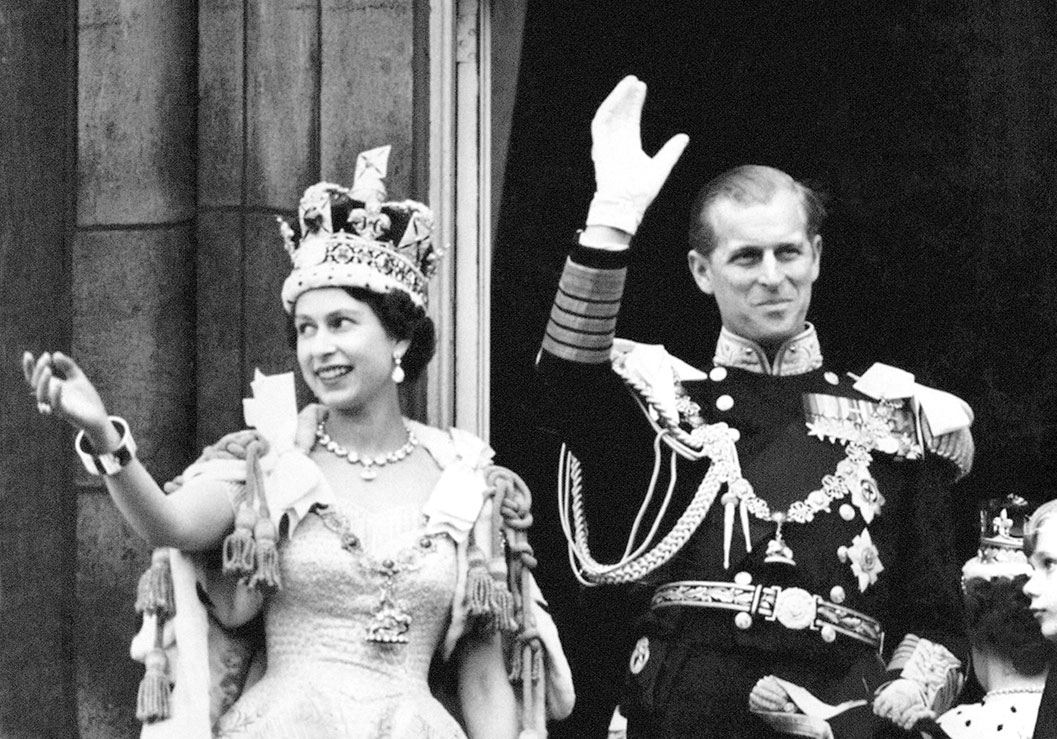Beyond the speeches and commemorations of the Platinum Jubilee, the Crown in this country has a deeper role to play. But what exactly is “the Crown” in Canada? In a nutshell, it’s the democratic institution of constitutional monarchy. READ MORE>>
A Tradition of Service
Understanding the Canadian Crown as a uniquely Canadian institution

Queen Elizabeth II and Prince Philip wave from the balcony at Buckingham Palace after Her Majesty’s coronation.
Beyond the speeches and commemorations of the Platinum Jubilee, the Crown in this country has a deeper role to play. But what exactly is “the Crown” in Canada? In a nutshell, it’s the democratic institution of constitutional monarchy. Government is carried out in the name of the reigning monarch by their “advisers” — the ministers of the Crown led by the prime minister or premier and responsible to the elected representatives of the people in Parliament or a legislature.
Monarchy has been at the centre of governments in Canada for more than 500 years. When John Cabot landed in Newfoundland in 1497 and Jacques Cartier in Gaspé in 1534, they flew the banners of their kings. French and British monarchs presided over colonial settlements until the French regime was displaced by the British in 1763.
During the negotiations for Confederation in the 1860s, one point was uncontested: the new dominion would be a constitutional monarchy with Queen Victoria as sovereign. A governor general would represent the Crown for the country as a whole, and a lieutenant governor would do the same in each province. They would act as mini constitutional monarchs in their jurisdictions.
THE CROWN AND GOVERNMENT
The Crown is more than just a symbol; it is a political institution at the heart of Canada’s democratic system of government. Canada is a constitutional monarchy with responsible government and a parliamentary structure.
In concrete terms, this means the Queen’s representatives formally appoint prime ministers and premiers. They must give royal assent to bills for them to become law. Parliamentarians, police and military personnel, and new citizens swear allegiance to the Queen of Canada. Justice is administered by the courts in the name of the Queen.
But though governments derive their powers from the monarch, they can exercise them only with the support of a majority of elected representatives of the people. If they lose the confidence of the House or legislature, they must submit their resignation to the Queen’s representative. The governor general and the lieutenant governors also retain some “reserve powers”: appointing the first minister, proroguing and dissolving Parliament or the legislature, and ultimately dismissing a first minister and government if they overstep the bounds of constitutional legitimacy.
THE CROWN AND INDIGENOUS PEOPLES
From early contact, the Crown was the institution through which Europeans established formal relationships with Indigenous Peoples. King George III’s Royal Proclamation of 1763 and its ratification by the Nations of the Great Lakes Region through the 1764 Treaty of Niagara affirmed Indigenous sovereignty in their lands.
The treaties that have been signed incorporated promises of peace, friendship and co-operation. The historic relationship between the Crown and Indigenous Peoples, the treaties and the rights they encompass continues to be guaranteed by the “honour of the Crown.” This is why they are made with the Crown and not the government of the day.
THE MONARCHY TODAY
The Constitution Act, 1982 entrenched the monarchy in Canada and kept Queen Elizabeth II as Canada’s head of state. Amendments to the Constitution that relate to the offices of the Queen, the governor general and the lieutenant governor of a province require the unanimous consent of both houses of Parliament and all 10 provincial legislative assemblies.
As Queen Elizabeth II marks her Platinum Jubilee, constitutional monarchy remains a key feature of Canada’s political and constitutional order, the culmination of five centuries of historical evolution, distinguishing us from our southern neighbours, symbolizing the treaty relationships and serving as a unique element of national identity.
Michael Jackson is the president of the Institute for the Study of the Crown in Canada.
